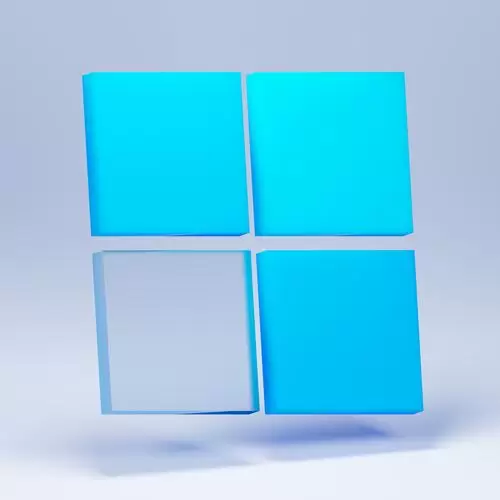In today’s quickly expanding digital market, firms must integrate several software tools and platforms. So they will be able to remain competitive and efficient. Microsoft Fabric is an effective method for connecting and using Microsoft’s network of apps and services.
This beginner’s tutorial will help with understanding Microsoft Fabric. Moreover, it will help you get started on your integration journey if you’re new to it and want to maximize its potential.
Understanding Microsoft Fabric
Before digging into the specifics of getting started with Microsoft Fabric, it’s important to come closer to understanding Microsoft Fabric. Sometimes it`s known as the “Fabric” for short. So it is a collection of Microsoft integration technologies, tools, and best practices. Its major purpose is to streamline and simplify the integration of diverse Microsoft products and services. It results in a more unified and integrated digital world.
Assume you’re using Office 365, Microsoft’s cloud-based office suite. You can also use SharePoint to manage documents, Microsoft Teams to communicate and collaborate, and Power BI to analyze data. Each of these apps has its own capabilities. However, one can see their entire potential when they function in tandem. This is exactly what Microsoft Fabric aspires to: seamless integration of Microsoft technologies.
Getting Started with Microsoft Fabric
Now that we’ve established a basic grasp of Microsoft Fabric, let’s look at how to get started with it:
1. Familiarize Yourself with the Microsoft Ecosystem
Before going into Microsoft Fabric, it’s critical to first understand the Microsoft ecosystem. This involves knowing the main apps. For instance, Office 365, SharePoint, Teams, and Power BI, as well as any additional Microsoft services your firm employs. The better you understand how these technologies perform individually, the more efficiently you can combine them using Microsoft Fabric.
2. Investigate Microsoft Documentation
Microsoft Fabric materials and resources are available on the company’s official website. This resource offers instructions, tutorials, and best practices for many elements of integration. So begin by reading the official Microsoft Fabric documentation to learn more about the capabilities and potential of this integration solution.
3. Identify Integration Needs
The next stage is to determine your organization’s exact integration requirements. What procedures may benefit from seamless integration? Are there any pain areas or bottlenecks that integration might help to alleviate? Engage with various teams and departments. Thus, you`ll obtain feedback and discover places where Microsoft Fabric may bring value.
4. Use Microsoft Fabric Consulting Services
Microsoft Fabric may be a complicated. Also, it can be highly customized solution. Engaging Microsoft Fabric consulting services is frequently a sensible decision, especially for newcomers. These consultants are experienced in utilizing Microsoft Fabric to provide customized integration solutions for your firm. They may examine your present setup, propose integration solutions. On top of it, they can give advice throughout the deployment process.
5. Create an Integration Plan
To take most out of understanding Microsoft Fabric, make a precise integration strategy with the assistance of Microsoft Fabric consultants. This strategy should define the precise integrations you’ll be implementing. Also, it should define the goals you hope to achieve, and a project timetable. One requires a well-defined plan for a successful integration effort.
6. Implement Integration Solutions
Once you have a plan in place, it is time to begin executing your integration solutions. Depending on your organization’s needs, this might entail creating interfaces between multiple Microsoft programs. Additionally, this might involve automating data flows, or designing workflows to simplify procedures.
7. Test and Iterate
Testing is an important stage in every integration effort. Ensure that the integrated solutions perform as intended and that data flows easily across apps. Microsoft Fabric consultants can assist with thorough testing to identify and resolve any issues.
8. Provide Training When Understanding Microsoft Fabric
It’s critical to give training to your staff when you use Microsoft Fabric solutions. Ensure that they understand how the integrated environment works and how it may improve their workflows and productivity. Training sessions may greatly assist the transfer to a new style of functioning.
9. Maintain and Monitor
Integration is a continuous process rather than a one-time event. So monitor your integrated environment on a regular basis to ensure that it is still functioning efficiently. Microsoft Fabric professionals can help with regular maintenance and upgrades. This is to keep your integration solutions up to date.
10. Measure Success
Finally, assess the success of your Microsoft Fabric integration. Are you meeting your objectives? Are employees more productive, and are workflows more efficient? So, collect feedback from users and use metrics to assess the impact of integration on your organization.
Getting started with Microsoft Fabric may be overwhelming at first. However, with the correct strategy and the support of Microsoft Fabric consulting services, you can harness its power to alter the way your business operates. The ability of Microsoft Fabric to easily link numerous Microsoft products and services offers enormous potential for boosting productivity, collaboration, and efficiency. Thus, as you begin your journey with Microsoft Fabric, keep in mind that integration is a continuous process that takes attention and agility. Stay informed, keep learning, and embrace the future of integration with Microsoft Fabric.

Petr is a serial tech entrepreneur and the CEO of Apro Software, a machine learning company. Whenever he’s not blogging about technology for itechgyan.com or softwarebattle.com, Petr enjoys playing sports and going to the movies. He’s also deeply interested in mediation, Buddhism and biohacking.

